BENIN
History

History

History
Kingdom of Dahomey
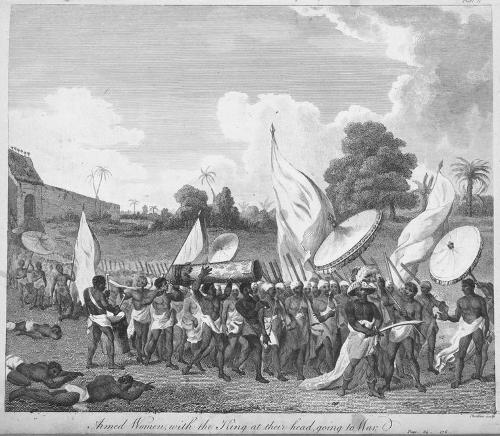 Armed Amazons headed by the king are at war 1793Photo: Public domain
Armed Amazons headed by the king are at war 1793Photo: Public domain
Before 1700, the area of present-day Benin had a few important coastal city-states (mainly of the Aja ethnic group, but also made up of Yoruba and Gbe peoples). Located mainly to the east of modern Benin, the Oyo Empire was the most important military force in the region. It carried out regular raids and demanded tribute from the coastal and tribal regions. The situation changed in the early 1700s when the kingdom of Dahomey, which was made up mostly of Fon people, was founded on the Abomey Plateau and began to take over areas along the coast. The Dahomey Kingdom was known for its culture and traditions. Young boys often apprenticed to older soldiers and learned the military customs of the kingdom until they were old enough to join the army. Dahomey was also famous for establishing an elite female soldier corps. They were known to Europeans as the Dahomean Amazons. This emphasis on military preparation and performance earned Dahomey the nickname "Black Sparta". The Kings of Dahomey sold their prisoners of war as transatlantic slaves. Because of this flourishing trade, the area was called the "Slave Coast". In 1885, the last slave ship set sail from the coast bound for Brazil in South America, which had yet to abolish slavery.
French colony
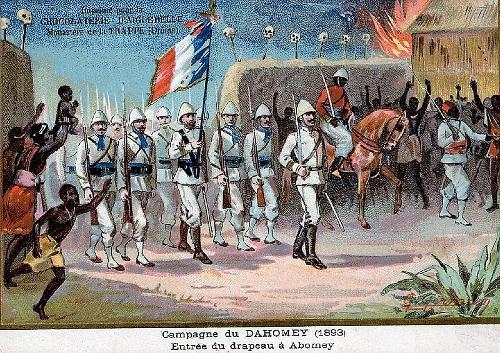 French occupy DahomeyPhoto: Public domain
French occupy DahomeyPhoto: Public domain
By the mid-1800s, Dahomey began to weaken and lost its status as a regional power. This allowed the French to take over the area in 1892. In 1899, the French incorporated the land called French Dahomey into the greater French colonial region of West Africa. In 1958 France granted autonomy to the Republic of Dahomey, and full independence on August 1, 1960, which is celebrated every year as Independence Day, a national holiday.
Independent Benin
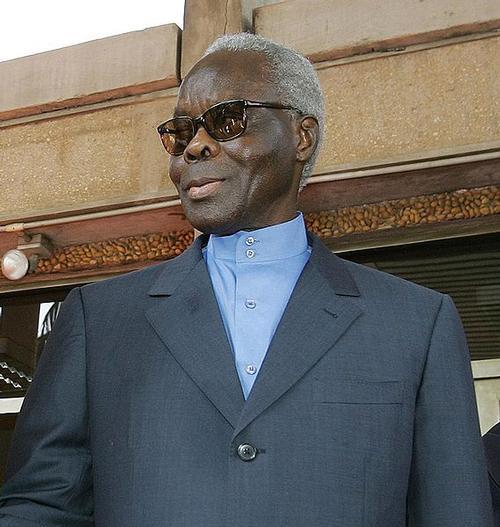
After a period of fierce power struggles, in which Benin acquires a dubious reputation as the country with a record number of coups, General Mathieu Kérékou seizes power in 1972, also through a coup. Kérékou's first reign has the character of a Marxist-Leninist dictatorship that will last until the end of 1990.
In this period, which is partly at the root of the problems that still haunt Benin today, the country slips towards chaos, inertia and poverty, especially towards the end. Corruption is rampant. The economy is being destroyed by the collectivization of agriculture, land expropriation, nationalization of banks, insurance companies, the water and energy company, the brewery, the textile industry. The People's Revolutionary Party of Benin (PRPB) is the only party allowed. There is no question of freedom of speech. Dissidents are arrested and human rights are being violated.
Although the dogmatic nature of the regime has diminished since 1980, discontent is growing. The salaries of the enormously grown civil service (from 9,000 to 47,000) are no longer paid. Banks are out of business. The formal economy no longer exists. Corruption and banditry ravage the country.
When in 1988 and 1989 one strike after another brings the country to a standstill and, moreover, the Berlin wall has fallen, the regime realizes that it no longer has a choice. The change is heralded by the Catholic Church, which in early 1989 condemned the regime en bloc in a courageous pastoral letter. Kérékou bows his head. He renounces Marxism-Leninism at the end of 1989, dissolves the politburo and central committee, and approves the convening in February 1990 of the Conférence Nationale des Forces Vives de la Nation. At this historical conference, which in the following years was also followed elsewhere on the continent - with varying success - the foundations were laid for today's multiform Beninese society in a period of just 10 days.
The success of the conference is largely due to the Presidency, but above all the personality and moral superiority of Mgr Isedore de Souza, Archbishop of Cotonou, and his personal influence on Kérékou. With great tact and discretion he manages to ensure that Kérékou finally accepts the conclusions of the conference. In his closing speech, Kérékou expresses his shame for his original resistance. The audience responds with an ovation. For Kérékou this also means a personal turning point, he converts to a devout Christian. This episode is relevant because it explains in part how Kérékou was democratically re-elected six years later as president of Benin.
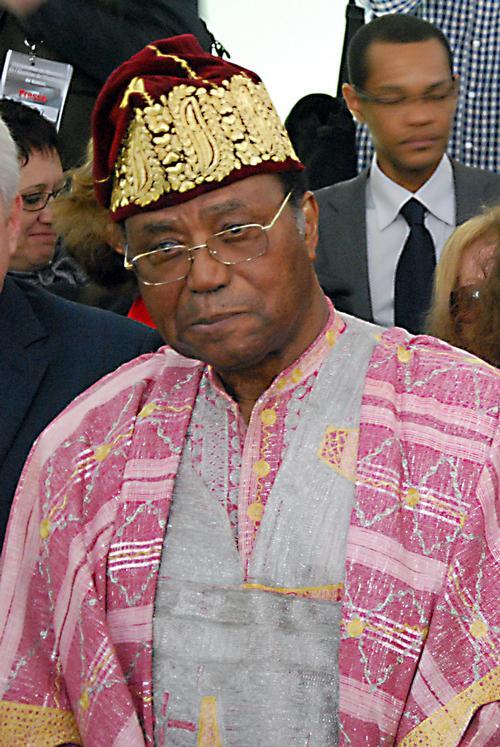
A new period dawns for Benin. In accordance with the conclusions of the Conference, an interim government will take office, with Kérékou as President a.i. and World Bank official Nicéphore Soglo as Prime Minister. At the end of 1990, a new Constitution was adopted, laying the foundation for the new democratic system. There is complete freedom of speech, a multitude of political parties, newspapers, and radio stations are established, political prisoners are released, exiled dissidents return. Military personnel in government positions are replaced by civilians.
In the first democratic presidential elections in Benin in 1991, Soglo won with 67% of the votes the presidential election of Kérékou, who ran for election at the last minute.
Soglo faces a Herculean task. He does not lack goodwill. Western donors, World Bank and IMF come to his aid with considerable financial resources. Although he can boast of important feats of arms, he is seen by the population as an alienated technocrat from his country: his career at the World Bank has removed him from Beninese reality; the World Bank-driven and far from painless structural adjustment program is troubling him. The predominant role of his controversial wife and RB party leader Rosine Vieira Soglo is also not well received by everyone. The 1994 devaluation of the Franc CFA contributes to growing discontent with his rule, leading to his defeat in the second presidential election since the introduction of democracy in March 1996, where ex-President Kérékou was re-elected in transparent and free elections. is becoming.
21st century
And also in the presidential elections of March 2001, Soglo has to lose out against his dead opponent Kérékou. Since 1996, Kérékou is therefore again the head of state of Benin.
Kérékou continues the economic adjustment program initiated by Soglo, with support from the World Bank and IMF. Aid is also pouring in from other donors, notably the EU, France, Germany, Denmark, Switzerland and the Netherlands. Liberalizations and privatizations are continuing. Benin is experiencing a decade of democracy, freedom of speech, and reasonable economic growth. The army no longer plays a role in political life. There are no political prisoners. There is complete freedom of the press. The macroeconomic policy is good, the government budget is almost balanced.
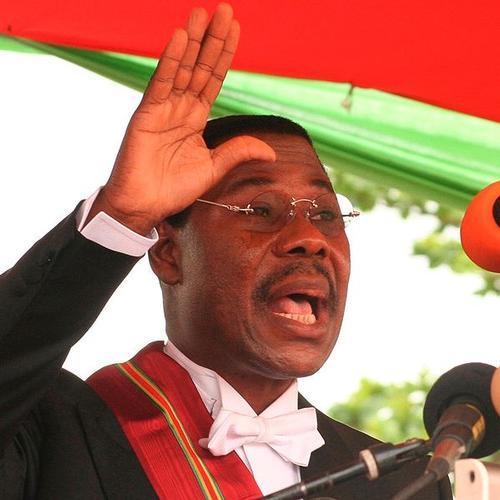
However, the legacy of Marxism is difficult to shake off. The country suffers from great corruption, a cumbersome and ineffective administrative system, an inefficient, corrupt and heavily centralized government, clientelism, nepotism, lack of initiative, corporate spirit and customer focus. The investment climate is poor and the country hardly attracts foreign investment. The liberalization of the cotton sector, which is so important to the country, is extremely complicated and faces major problems. Privatizations are accompanied by major fraud. There is a significant capital flight and a brain drain. About 95% of the economy remains informal. Economic growth (5%) is insufficient to rip the country out of the spiral of poverty. The high illiteracy rate is an additional obstacle. The Kérékou III government, which took office in April 2001, was faced with an enormous challenge, and was unable to make a positive difference. Kerekou was succeeded on April 6, 2006 by Dr. Thomas Boni Yayi, ex-president of the West African Development Bank, after an initially problematic but ultimately successful democratic election process. In April 2007 Yayi also obtains a majority in parliament. In April 2008 tensions arose after local elections. In April 2011 Yayi is re-elected and in November of that year the Pope visits Benin. In the years 2012 and 2013 there have been several plots against the president. Yayi accuses his opponents of attempted poisoning.
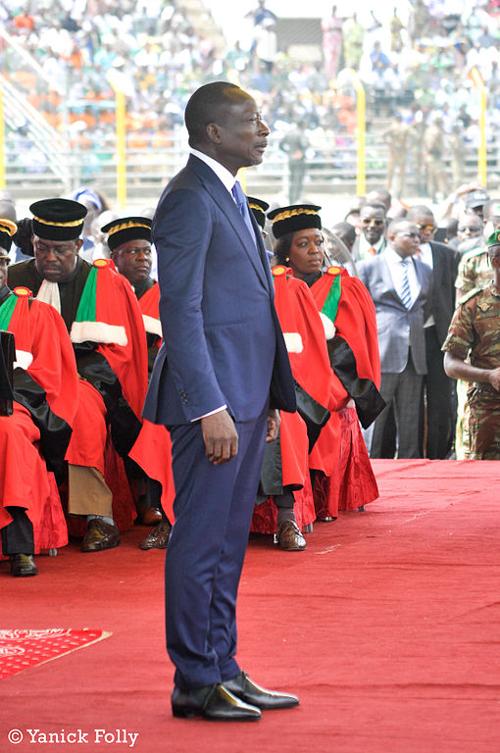 Patrice Talon president of BeninPhoto: Yannickfolly CC 4.0 International no changes made
Patrice Talon president of BeninPhoto: Yannickfolly CC 4.0 International no changes made
In December 2013, a French court refused to extradite businessman Patrice Talon, who is suspected of this offense. In May 2015, Yayi's party wins the parliamentary elections but does not get an absolute majority. Yayi appoints Lionel Zinsou as prime minister and as intended successor. However, in March 2016, Patrice Talon wins the presidential election. In April 2017, Talon failed to bring the term of the presidency one-off to six years. In April 2019 parliamentary elections are chaotic, many opposition parties do not participate. In April 2021 Talon wins a second term as president.
Sources
Elmar Landeninformatie
CIA - World Factbook
BBC - Country Profiles
Copyright: Team The World of Info